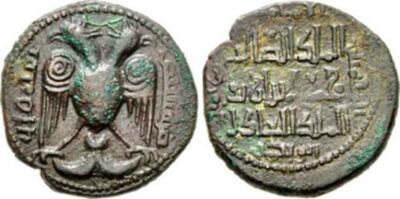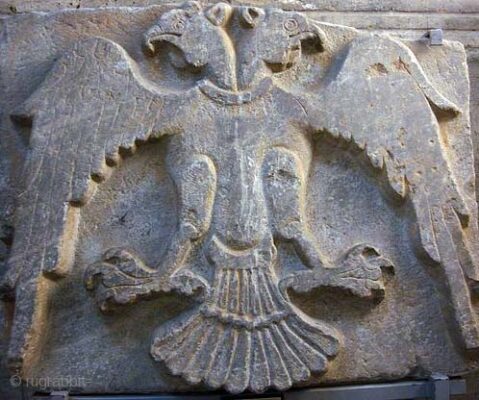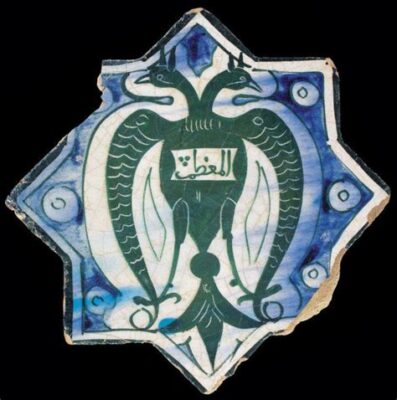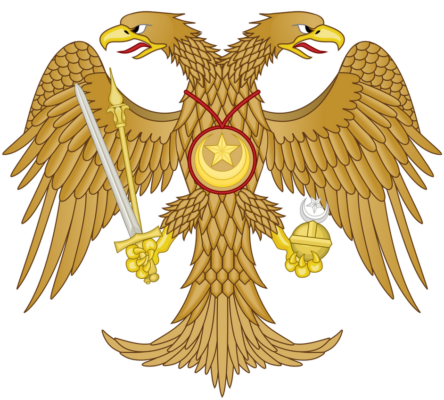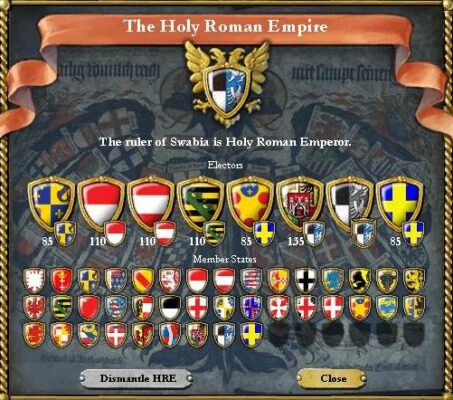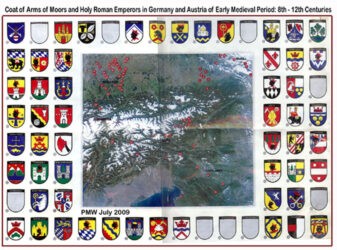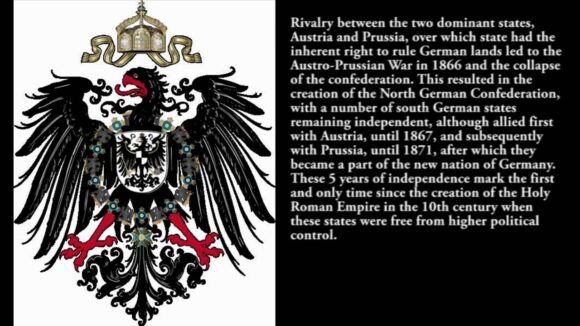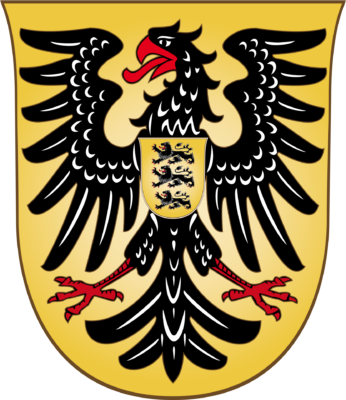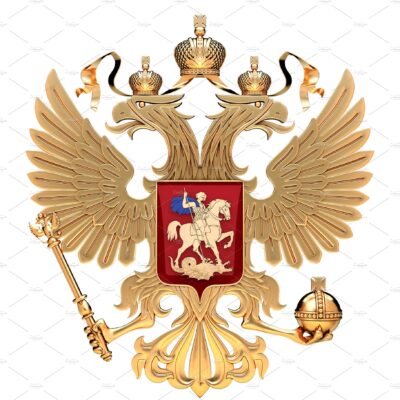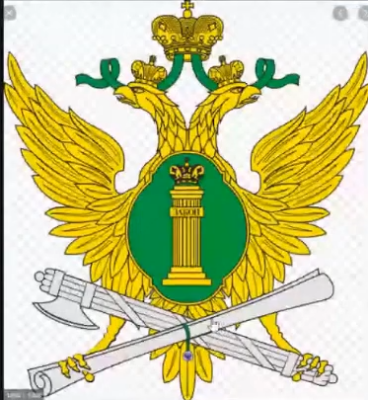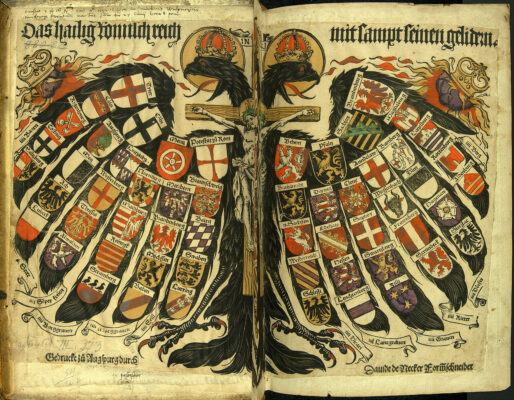
1 August 2021
When Crusaders, passed through Byzantium on their way to the tomb of Solomon, the double-headed eagle which they saw embroidered in gold on heavy banners of silk, borne aloft by the Seljuk Turks, had been four thousand years on its way. To these same Crusaders this emblem was an honoured one, and though the enemy displayed it, they would fight to death for its possession and in triumph bear it, dripping with blood, to their encampments on the Levantine shore. It was from this Eastern Empire that the knights took this banner to adorn the courts of Charlemagne, and as a sacred relic hung it in the great cathedrals, whose architects and masons had so often been honoured by this Emperor of the West.
From whence came this two-headed eagle, and how came it to be associated with Scottish Rite Masonry? The last part of this question is easier to answer than the first, for there is direct testimony that Frederick of Prussia supplied this crest during the formative stages of the Rite, but neither Frederick nor indeed Prussia could claim the exclusive right the use or to bestow it. It is the imperial emblem of Russia, Austria, Serbia and other portions of the disrupted Holy Roman Empire, and Prussia adopted the emblem long after it had flown over Byzantium as the royal arms of the “Emperors of the East and West.” Why?…Well, quite simply the Prussian’s are Byzantium.
The use of the descriptive of an eagle is a misnomer, the actual symbol is that of the phoenix.
The emblem soon spread throughout all Europe, an inheritance from the knight Crusaders. In England we find it used upon knightly arms. Robert George Gentleman displayed it upon his shield, with the motto, “Truth, Honour and Courtesy.” In France we find it used by Count de Montamajeur, and associated with the motto, “I shall hold myself erect and not blink.” I think he is speaking of his willy. We find it upon the arms of the Duke of Modena, (1628) with the legend, “No age can destroy it.” It appears upon the shield of Swabia in 1551, in Russia in 1505, and as the crest of the city of Vienna in 1461.
The Knights of Solomon’s Temple better known as the Knights Templar, together with the other Knights of Solomon’s Temple, those tied to Salahadin, conjoined their power in the pact made, and as we can see today, Solomon the dark sun is destroying the peach garden.
Is the Holy Roman Empire built entirely on Necromancy?
IT HAD MANY ANCIENT USES
Let us venture still further back into antiquity and view the double-headed eagle upon the royal arms of King Sigismund of the Roman-German empire, in 1335, upon the coinage of Malek el Salah in 1217, and upon a Moorish drachma under the, Orthogide of Kaifaacar, Edm Mahmud, of the same date. Indeed the Turkiman princes used it all through the twelfth century, but it proudly floated upon Byzantine banners as early as the year 1100 and we know not how long before.
In Germany we find the double-headed eagle used as the seal of the Count of Wurzburg in 1202; it was the coat of arms of Henricus de Rode in 1276; while Philip of Saxony bore it upon his shield in 1278. It was also the seal of the Bishop of Cologne, who no doubt adopted it from the city arms.
As the arms of towns and cities in England, this emblem appears upon the official seals of Salisbury, Perth, (Perthshire), Airedale and Lamark. In Holland and France there are also numerous instances of its use.
As the badge of royal orders we find the two-headed bird upon the emblems of the Austrian Order of the Iron Crown; in Russia upon the emblems of the Order of St. Andrew, founded by Peter the Great in 1689; in Poland upon the emblem of the Order of Military Merit, (founded May 24, 1792). As late as 1883, the King of Serbia adopted it as the emblem of the Order of the Double-Headed Eagle, commemorative of the restoration of the Serbian kingdom.
The Russian Order of St. Andrew uses the breast of the eagle upon which to display the X cross with St Andrew, crucified upon it. Each eagle head is crowned and crossed swords rest upon the crowns with a larger crown above them. The Polish Order of Military Merit has a white eagle displayed upon a Maltese cross which rests upon the breast of a double-headed eagle, each of whose heads is crowned.
But the double-headed eagle is not European in origin for its use depends upon the contact of Europe with Asia Minor, and indeed with trade or warfare with the Turks.
The Turkish name for this conspicuous emblem is HAMCA, and by this name they call it when they see it carved upon the walls of ancient castles, upon time worn coins or emblazoned upon frayed silken banners in ancient palaces.
Travellers in Asia Minor, indeed, are surprised by the frequency of the double-headed eagle sculptures upon the castles of the Seljukian Turks, and upon the more ancient monuments of the Hittites, whose civilisation was at its height when the Hebrews were wild tribesmen upon the Arabian plains. Among the Hittite ruins in Cappadocia there are several of these notable ruins, an example being described by Perrot and Chipiez, who write :
“Sculpture, whereby the peculiarities which permit Pterian monuments to be classed in one distinct group, yields richer material to the student. Many are the characteristic details which distinguish it; but none, we venture to say, can vie with the double-headed eagle at Iasill Kaia, a type which we feel justified in ranging among those proper to Cappadocia, since it was unknown to Assyria, Egypt or Phoenicia. Its position is always a conspicuous one, – about a great sanctuary, the principal doorway of a palace, a castle wall, etc., rendering the suggestion that the Pterians used the symbol as a coat of arms plausible if not certain. It has been further urged that the city was symbolised by it, that the palace called by the Greeks Pteris (Pteron, wing) was the literal translation it bore with the Aborigines, that in a comprehensive sense it came to symbolise the whole district, the country of wings, i. e., numerous eagles, double-headed eagles with wings outstretched.”
The great city of Pteria, as Herodotus calls this unique dwelling place, was destroyed by Croesus. The ruins and walls of this city, now known as Boghaz Keui, (meaning Valley Village or Village in the Pass) have been examined with particular interest by archaeologists, but principally by Perrot and Guillaume. At the entrance of a palace these investigators found numerous rock sculptures, mostly picturing the processions of certain royal or priestly personages. Egyptian and Assyrian art motives predominate, but pure Hittite art is shown in the sculpture of the double headed eagle, upon whose displayed wings two priestly figures stand.
At Eyuk, a similar eagle with two heads facing opposite directions clutches a large hare with either foot. J. Garstang in his notable work, The Land of the Hittites, mentions there bicephalous eagles and gives two plates illustrating the rock carvings upon which they appear.
THE REMARKABLE SCULPTURES OF BOGHAZ KEUI
In his description of the Sculptures of Boghaz Keui, Garstang gives an analysis of the procession of priests, kings and gods shown on the rock carving alluded to above. This great bas-relief is upon the sanctuary passage way of the temple of Iasily Kaya. Concerning these images Garstang writes: “The significance of the double headed eagle is unknown. But that there was a local worship associated with the eagle is indicated by the discovery at Boghaz Keui of a sculptured head of this bird in black stone, larger than natural size, and by a newly deciphered cuneiform fragment from the same site, on which mention is made …. of the house or temple of the eagle. That the cult was general within the circuit of the Halys is suggested by the great monument which now lies prone …. near Yamoola. At Eyuk, also, there is a conspicuous though partly defaced representation of a priest of the Double-Eagle on a sphynx-jam of a palace gateway, a symbolism that we read to imply that the occupant of the palace was a chief priest of the cult….. Hence, we conclude that following the images of the national deities …. there came the images of the local cult of this part of Cappadocia, namely, the twin goddesses of the Double Eagle.”
Thus, in the ancient Kingdom of the Hittites, there was an actual temple devoted to the ceremonies of a priesthood dedicated to the cult of the two-headed eagle. While we may be sure that nothing in Scottish Rite Masonry is touched by direct Hittite influences, yet this emblem of the Thirty-second Degree must trace its history back to the ceremonies and beliefs of the Cappadocian eagle cult. We may with good reason conjecture that this strange bird painted or embroidered on banners was carried in many a strange rite and honoured in the sanctum sanctorum of the Temple itself.
But, let us go still further back into the ages of Asia Minor. Let us view the remains of Tello, the mound covering the site of the ancient Babylonian city of Lagash which flourished three thousand years B. C. Here M. de Sarzec, according to the great Assyriologist, M. Thureau Dangin, found the ruins of a temple and among other things in the rubbish he discovered two cylindrical seals. One of these has upon it the recitation of a King, who says:
“The waters of the Tigris fell low and the store of provender ran short in this my city.” He goes on to tell that this was a visitation of the gods. He, therefore, submitted his case to the divinities of the land. He dreamed, as a result, a holy dream in which there came to him a divine man whose stature towered, (as that of a mighty god in Babylonia should) from earth to heaven and whose head was crowned with the coronet of a god surmounted by the Storm Bird, “that extended its wings over Lagash and the land thereof.”
What, then, is this “storm bird,” this mysterious symbol that bedecks the brow of a god, and,what does it betoken?
Our first inquiry is to ascertain who was the patron deity of Lagash. It is easily determined that it was Ningersu, who with his wife, Bau, presided over the destinies of the city, and particularly that part known as Gersu. The divine man who rescues the world from the flood is this same Ningersu, the solar deity, who is always at odds with, yet always in full harmony with, the storm god Enlil, who was the patron deity of Nippur. Now the emblem always associated with Ningersu was an eagle, generally lion headed, called Imgig. Imgig seems always given the difficult task of clutching two beasts of a kind, one in either talon. In one instance these are lions, in another long-tailed oryxes, and still in another two serpents.
Many are the inscriptions depicting the image of Imgig looking perplexed, yet stolid, as he holds fast to the beasts beneath him. A beautiful silver vase, designed as a votive offering by Entemena, Patesi of Lagash, has etched upon it a central design of four lion-headed eagles, of which two seize a lion in each talon, a third a couple of deer and a fourth a couple of ibexes. This vase with its pictured symbols dates back to the year 2850 B.C. It rests in the Louvre today as a prized specimen of Babylonian art. Jastrow figures it in his work on Religious Beliefs in Babylonia and Assyria.
But Imgig, despite his peculiarities, might escape special notice were it not for the fact that in one or two instances he appears with two heads. It is in this wise that the bird appears in an old Babylonian cylinder seal once belonging to a priest of Ningersu. Upon this seal a priest or priestess presents a naked candidate or novitiate before an altar before which sits the goddess Bau, the Ishtar of Lagash. Behind the goddess is an inscription supported upon the two heads of a bicephalous eagle, which, of course is none other than the symbol of Ningersu and his city, Lagash. This is the oldest known representation of the double-headed eagle.
THE SYMBOL AS FOUND AMONG THE CHALDEES
M. Heuzey, in his Discouvertes en Chaldee page 261, says: ‘It may, I think, be presumed that the double-headed eagle, and the lion-headed eagle, and also the eagle with two heads, have the same significance when figured in front view with wings spread on each side. Unlike the griffon dragon, it is a beneficent emblem representing a protecting power. We find it in the earlier Chaldean period, but in the middle and latter part it quite disappears, although it is retained in the art of the Hittites to the region north and east of Assyria.”
Ward, in his Cylinder Seals of Western Asia, tells us that from this eagle in its heraldic attitude necessitated by, its attack on the two animals, was derived the double-headed eagle, in the effort to complete the bilateral symmetry of the bird when represented with an eagle head, turned to one side like the double face of human bifrons. An examination of the lion-headed eagle facing front shows characteristics that would easily suggest two eagle heads, but this is a matter of design, rather than symbolism.
The Babylonian custom of merging gods together have some bearing on this design. The double-headed bird may represent Ningersu and Enlil, the union of the Sun god and the Storm god, or it may represent the union of Ningersu and Bau.
As an emblem of Ningersu and of Enlil (the god to whom the Tower of Babel was erected) the eagle represents the union of the two greatest gods of Mesopotamia. Indeed, in the later years of Babylonia, either of these gods might be called by the name of other, and to worship one was to pay equal tribute the other.
In later centuries, when the Hebrews had been under more or less Babylonian influence, all the characteristics of Enlil and indeed, Ningersu, were ascribed to a new and rising deity whose home was reputed to be in the land of the Kennites and upon the lofty, smoking peak of Horeb-Sinai. He manifested himself exactly as Ningersu did, by earthquakes, fiery clouds and mighty hurricanes, as for example, is described in the 29th Psalm. This god had his seat on mountain top, from whence he blessed the grazing lands and the vegetation of the Kennites. It was this God that Moses found after instruction by his father-in-law, the Midianite. Like Enlil, this god had a consort who seems to have been Yerahme’el. His other co-equals we cannot easily recognise, because the scribes have only written or allowed to remain what they desired after their theological education in Babylon during the captivity. Nevertheless, they allow many a tell-tale clue to remain, and in the original Hebrew we may still read, “And the Gods (Els or Al-him) said, ‘Behold the man is become as one of us, to know good and evil.'”
But long before Moses found Yahwe and declared him the God of Isra-El (the God who Strives), and before this god absorbed all his predecessors and forbade their recognition, a similar duad had arisen among the Hittites, whose storm god Teshup was represented two gods, and whose symbol was a double-headed eagle. Thereafter no Hittite temple or palace was complete without a conspicuous carving of the doubly potent bicephalous bird.
THE ABORIGINES OF THE NILE
It was no doubt through the prevalence of this double-headed eagle among the Hittite ruins that the Turks found a reiterated motif for their own banners, emblazoning the magical Hamea, this bird of double power, upon them.
But long before the Hittite kingdom was founded, and centuries before the rise of Babylon and Assyria, and five full millenniums before the rise of the Hebrew tribes as a nation, the double-headed bird was known. Before any of the pharaohs ruled the valley of the Nile and before the pyramids had been erected, the pre-dynastic aborigines of the Nileland had carved upon trowel-like pieces of stone, a two-headed bird. These double-headed birds were prized enough to be buried with the dead, in whose tombs the archaeologist of to-day finds them as mysterious emblems of a long forgotten past. So old are these tombs containing the trowel blade with the two-headed bird upon its shoulders, that competent Egyptologists estimate an age of no less than 7,000 years before Christ.
Of interest, also is the fact that in America the double-headed eagle is found on a crest of the native priesthood. The Hida Indians today have a double-headed eagle which is displayed as a mysterious and honoured emblem, and just as this bird among the Hittites, the Babylonians and the temple worshippers of Lagash was a storm bird, so, likewise to the Hida Indians of our North West coast the double-headed eagle is their Thunderbird.
In our Christian architecture the two-headed bird has sometimes been employed, particularly as a window ornament. For example, we find it upon a church window in England, where an eagle with two heads perched upon the shoulder of Elijah symbolises the double portion of grace with which the prophet was endowed.
Professor Albert Grundwell of Berlin, who led an archaeological expedition into central Asia, found these double-headed eagles in ancient eaves. In Vol. XXIII of The Open Court is some mention of his discoveries. He there states that to the Hindoos the bird is known as Garuda and that the particular specimen that he illustrates was found on the ceiling of a cave near Qzyl, near the city of Kutcha. Its age he cannot guess, but he intimates that the painting is very old. Like Babylonian and Hittite eagles of this class, the Garuda grasps identical animals, in this case two serpents.
The double-headed eagle, thus appears to be Asiatic and to have been originated in the lands where the greatest temples have been erected, and where religious cults have been strongest.
To recapitulate: This bird appears in Lygash under the name of Imgig, and apparently is emblematic of the union of Enlil and Ningersu; it appears among the Hittites as Teshup; it appears among the Hindoos as Garuda; it is called Hamca by the Seliuk Turks; and among the Hida Indians of America it appears as the Thunder Bird or Helinga. Among the Zuni Indians in another form it appears as a highly conventionalised design, but still as a double-headed thunder bird, the Sikyatki.
The two-headed eagle was adopted by the Turks, and by the Arabians it was known as the Roc. From the Turks it passed into use by the Crusaders, was employed as an imperial emblem by the Holy Roman Empire, adopted by the Russians, Poles, Serbians, Prussians, Austrians and Saxons. It was used as a private seal and as arms in Germany, Spain, France, Netherlands, England, and Russia.
Thus has the eagle with one body, one heart and two heads, flown afar from its natal home. We may only conjecture the varied uses to which it was put, the names by which it was called and, the things or principles it typified. Of these things where there has been reasonable assurance of certainty we have written. We are certain that the emblem is one of the oldest in the world, and from its nature we are justified in believing that it symbolises a duality of power, a blending of two names, two functions and two dominions in one body. As Enlil or as Ningersu, it stood for a union of solar and celestial forces; as a royal crest it has stood for power and dominion, and as a religious seal it stands for truth and justice.
As a Masonic symbol this device is time honoured and appropriate. It is no less the badge of the Grand Inspector and Sublime Prince than that of the Grand Elect Knight. As the symbol of the Inspector it suggests an equal contemplation of both sides of a question-and thus, judicial balance. It is seen as the fitting emblem of an elect knight in ancient religious engravings, and to the exclusion of the cross itself, it appears upon the banners of the knight and prince who behold the apparition of the virgin and child of the rosary. And, as in ancient Mesopotamia, the double eagle is here associated with the sun symbol in the form of the Chaldean Elu, which the knight and prince wear, evidently with the same ancient meaning: “The light toward which my eyes are turned.”
Source : http://www.masonicdictionary.com/doubleeagle.html
Images of the Double Eagle
Islamic-Coin-post-Seljuk.
Seljuk Double Headed Eagle.
Double eagle of the Ottoman.
Coat of Arms of the Empire of Rum.
Holy Roman Empire.
Moors Holy Roman Empire.
Double Headed Eagle of Freemasonry.
Arms of the Hohenstaufen dynasty.
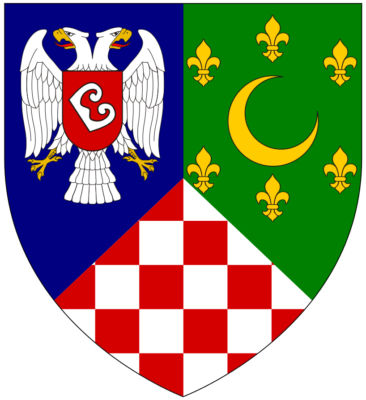
Alt Coat of Arms – Bosnia and Herzegovina.
Golden Coat of arms of Russia.
Russia’s Federal Bailiff Agency changed logo in 2004 incorporating the fascia.
Further Study
Secret Societies
